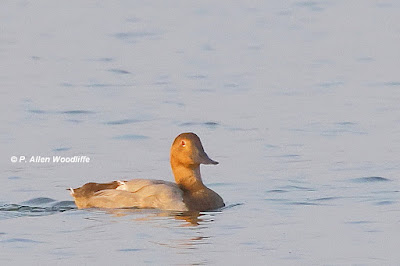I don't recall ever being on a roller coaster in my earlier days, but these last few weeks and months seem like I am on one now. Lots of ups and downs, sometimes with little or no warning, as I wrestle with the passing of Marie. Nonetheless, I have been out roaming around bits of the natural world when the mood and weather seem appropriate. Of course the heat and humidity is always a factor, at least for me. Even though I grew up on a farm in southern Chatham-Kent, I don't seem to have minded the heat and humidity as a youth working on the farm. But as an adult, I never seemed to be able to tolerate it all that well.
One of my favourite go-to places reasonably close by, is the Mitchell's Bay North Shore Trail. It is quite open, with great views of various bird species and usually a bit of a breeze to make the weather more comfortable. It is one of the better spots to see and photograph Great Egrets, which nest at some of the cattail islands just out in the lake. I usually see at least half a dozen on my outings.
They also nest in the marshes of Walpole Island, which is off in the distance from the best vantage point of the trail here. The view point at the end of the gravel trail, where I took this next photo from, is higher than the surrounding wetlands, giving some great views of the marsh as well as Lake St. Clair.
On one of my recent times along this trail, I got a fair whiff of skunk smell. I didn't think too much of it at first, since skunks are native to the area. But as I got a little further down the trail, I noticed a bird in a tree in the direction the skunk smell was coming from. It was a Great Horned Owl, sometimes called a skunk owl, since they don't seem to be bothered by the smell, and will prey on them from time to time. This owl had undoubtedly had a recent experience with a skunk.
Upon a closer look at the photo on the computer, I noticed this owl did not have any sight in its right eye.
With the openness along this trail, it is great for getting good views, and even some good photos of the creatures hanging out in the area. Another member of the swallow family, is Barn Swallow shown next. There are always a few, but not anywhere near the numbers exhibited by the Purple Martins.
Out over the lake there may be a few different gulls and terns, especially in spring and fall. Caspian Terns, shown in the next two photos, are becoming more plentiful. They don't breed in the immediate area, but frequent the area as they hunt for small fish to capture from the relatively shallow lake these days.
In the cattails, one will often hear Marsh Wrens. On occasion one will even come into view for the camera!
More likely to be seen are Song Sparrows.
Eastern Kingbirds are scattered around in small numbers...
...and there is usually a Green Heron skulking around the edges.
Another favourite spot to check out is St. Clair NWA, which has a great trail meandering through the ~240 ha wetland. Birds are present in good numbers, but not always within decent camera range. That may change over the next few weeks, as migrant waterfowl will be passing through, and many will take refuge in the NWA from the hunting pressures occurring in nearby marshes. However other things with wings include butterflies, such as this Black Swallowtail.
...and lots of Monarchs and the similar looking Viceroy, shown next.
Wildflowers such as Blue Vervain, next, are plentiful...
Sandhill Cranes can be seen regularly. One of the best times to see and hear them is in the early evening, as they return from their daytime feeding in fields, and spend the overnight hours in the marsh. I typically see 20 or more, and they will continue in reasonable numbers for the next several months.
A Northern Harrier, a.k.a. Marsh Hawk, patrols the marsh, followed by an Eastern Kingbird which doesn't approve of its presence.
Another wetland wildflower, and also a Species At Risk is this next one: Swamp Rose Mallow. It can be quite abundant in these marshes along Lake St. Clair.
I did make it to Rondeau on one occasion, hiking along the Marsh Trail. It has always been one of my favourite parts of the park, but in recent years the trail has taken quite a beating with the high water. It is still hike-able. Bald Eagles can be seen fairly regularly, as there is at least one nest out along the edge of the forest and marsh. This eagle, a sub-adult, was perched in a nearby dead tree and was surprisingly tolerant of me along the trail.
Another one was seen flying by, although it was flying away and didn't give me the photo op that I would have liked.Elsewhere I stopped in at the Blenheim Sewage Lagoons on my way home from Rondeau, in part to see a few shorebirds that are becoming more numerous. But this long-staying male Canvasback got my attention, and although it was well out close to the middle of one of the ponds, enabled me to get a couple of photos. Canvasback are more of a western species, although they pass through in good numbers on migration. Summer records are not unheard of, but quite unusual.
I did see a few shorebirds, but they were a bit skittish. Perhaps it was due to a Peregrine Falcon hanging out in the area, which put the shorebirds to flight periodically. This Lesser Yellowlegs was one of the more numerous species, with at least a dozen seen, and it gave me a good photo op.


















































